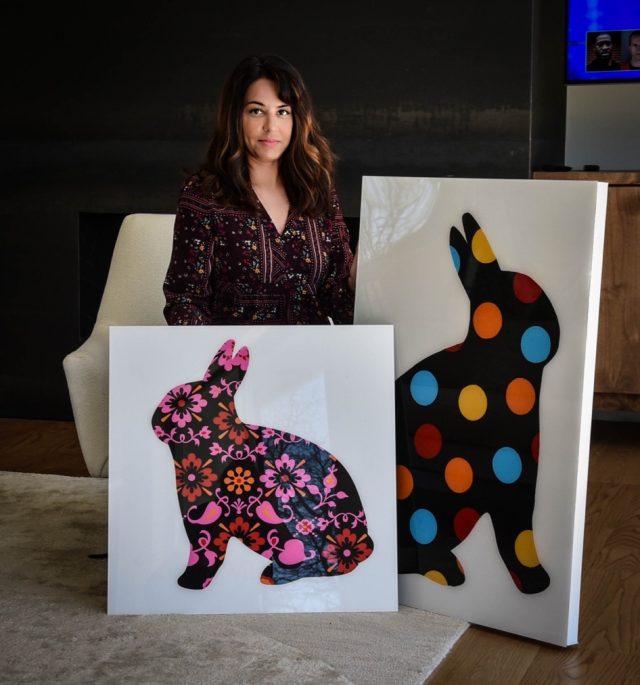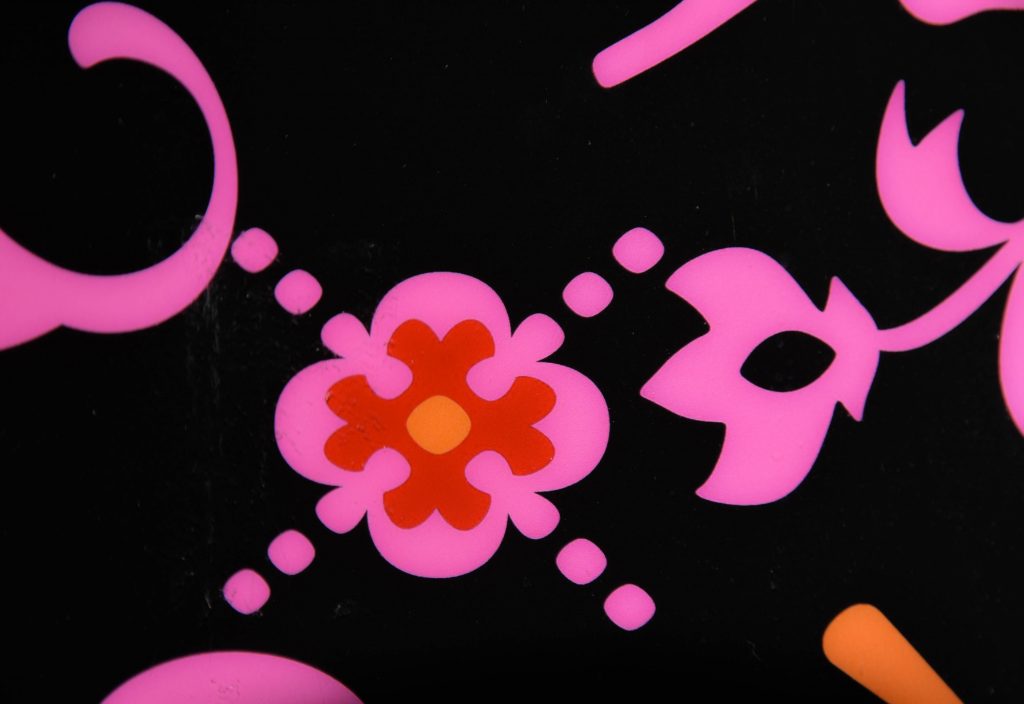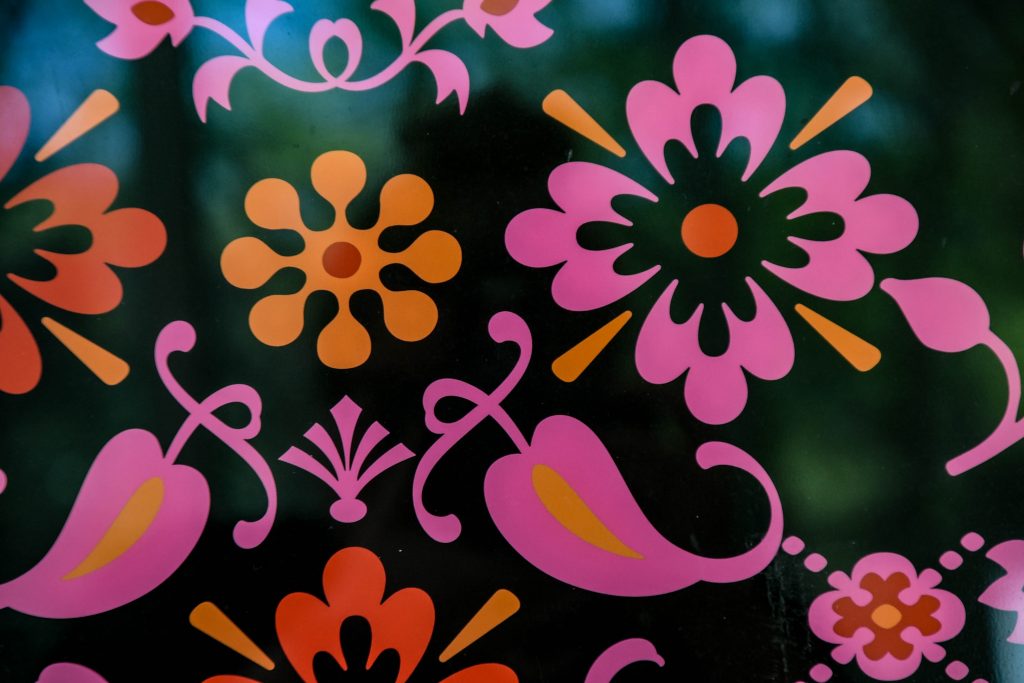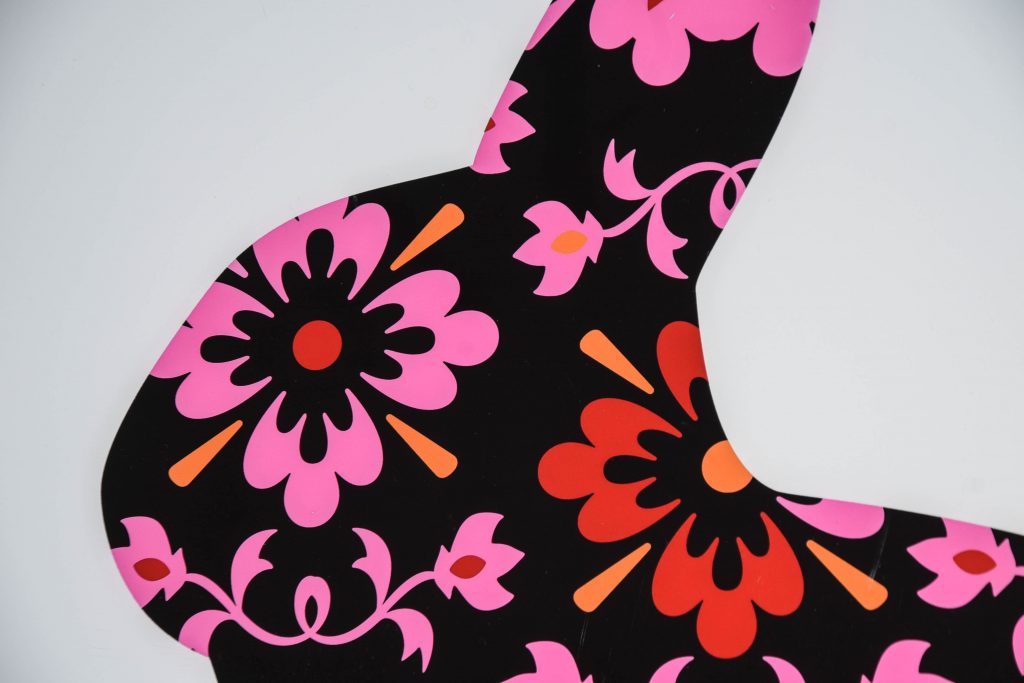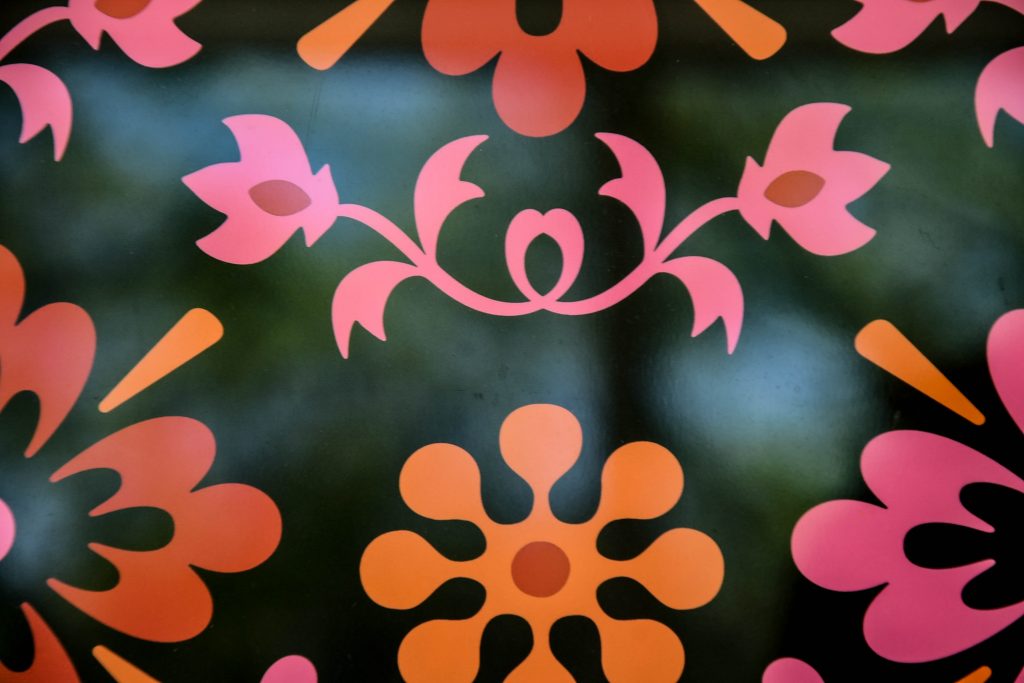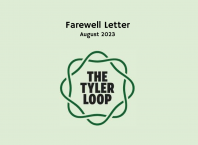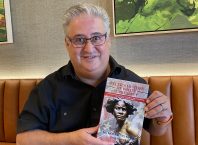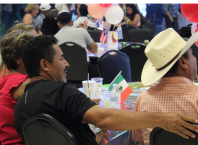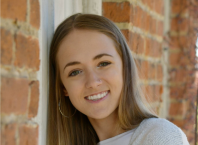A black rabbit painted on a sheet of Plexiglass, solid black on a white background, appears in profile, as though resting. This could be the start of a story by Lewis Carroll. Like Alice in a mixed-up world, Sonia Semone must work backwards to create the end result.
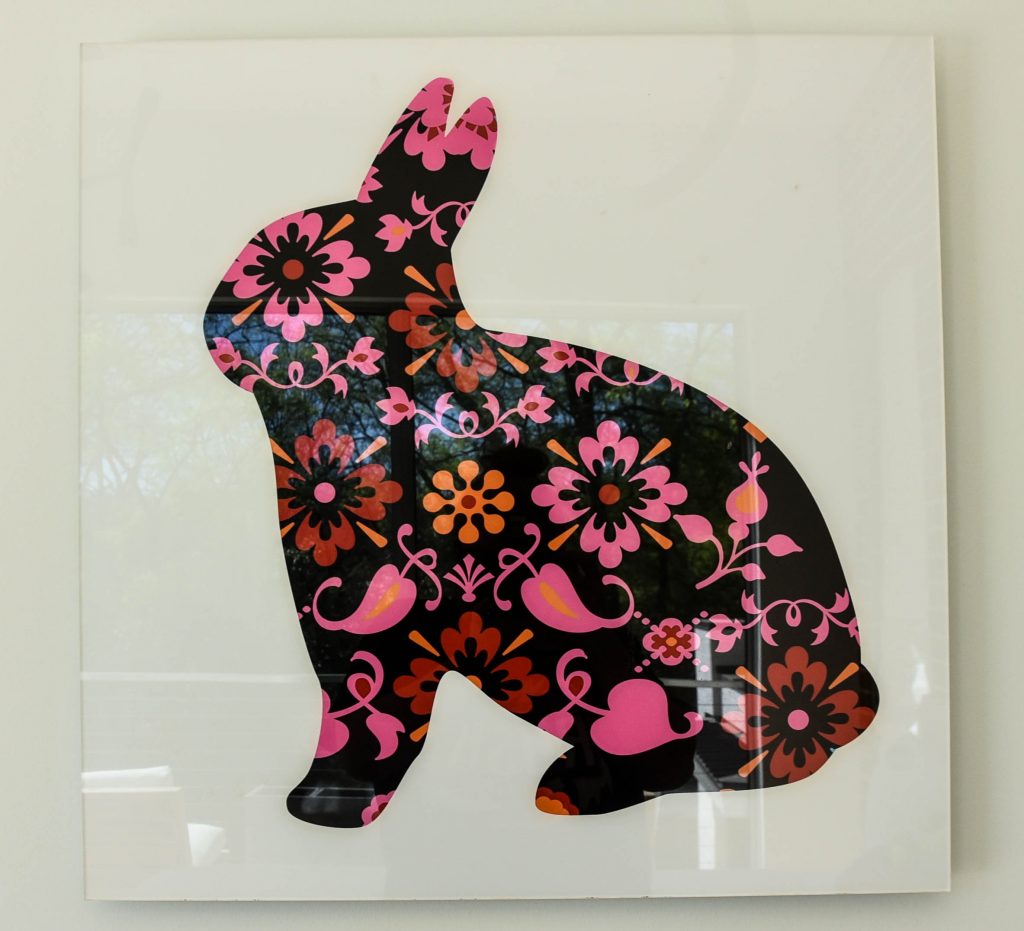
In place of the rabbits’ arms, legs, eyes and mouth, there is instead solid black broken by ornate flower patterns.
Sonia Semone was born and raised in Tyler, Texas, and has been an artist since high school, but her work has evolved significantly over the years. Painting on Plexiglass is a relatively new technique she embraced.
Being an artist was not a deliberate choice for Semone. “I just always have been making art, ever since I was in art in high school. It never was a question; it was just something that I was always doing,” said Semone.
Semone pursued art at the University of North Texas, where she originally focused on jewelry making.
Moving to Tyler and continuing her art education at UT Tyler, she focused her talents on two-dimensional art, earning a Bachelor’s of Fine Arts and Master of Arts in Art Studies.
During her training, her style developed towards abstract expressionism, a style of painting focusing on expressing moods, feelings and thoughts without using recognizable imagery, such as human or animal bodies. The genre might use splashes of color and or geometric shapes instead. Sonia says she still credits abstract expressionism as important to her process. Working on glass required a learning curve.
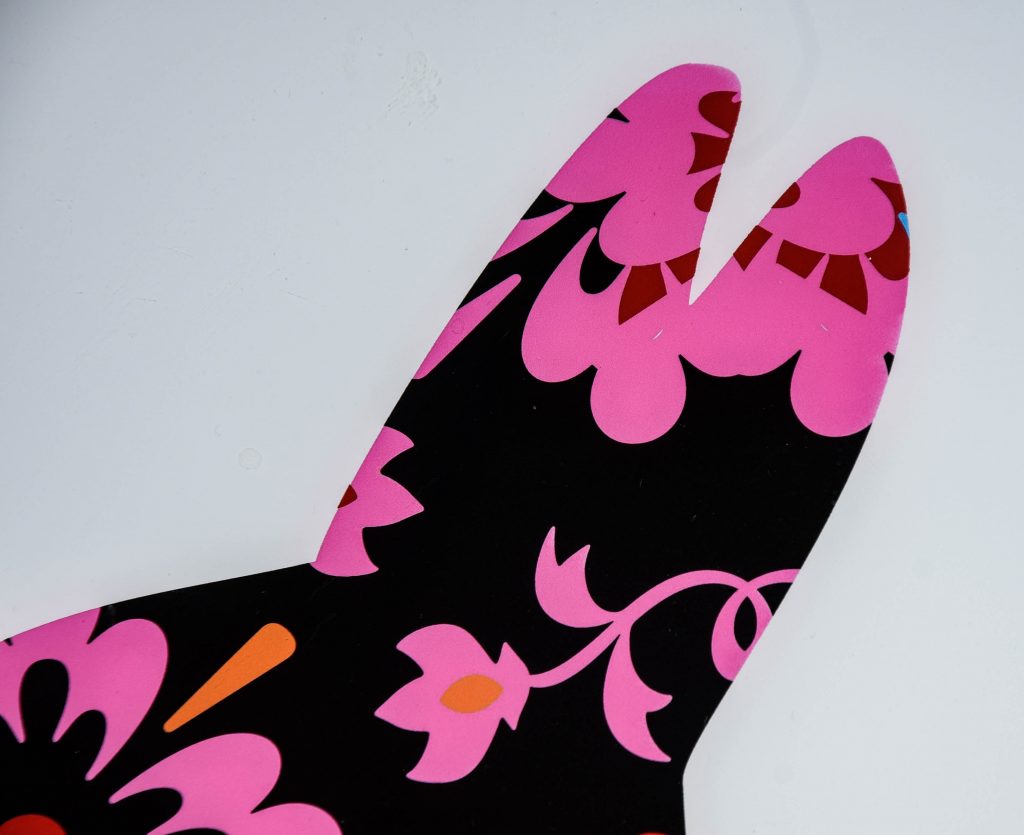
“Really, non-representational art is what I did before I got into glass,” said Semone. The process is so different working with glass that I had to be very intentional with what I was doing.”
To create the glass rabbit, Semone placed the paint directly onto the plate glass in layers, starting with the first layer of patterns. From there, she works backwards, applying layer after layer of paint.
Semone quickly discovered that working on glass is much less forgiving than painting on canvas.
“When you’re working on a canvas you can build yourself up. You can just paint over it [if you make a mistake]. But when you’re working with glass, you have to be more calculated,” said Semone.
In addition to painting with no mistakes, Semone had to learn how to think in reverse. “I paint from behind. If you mess up a stroke, the whole plane that you’re using, the substrate is gone. You have to be calculated in the way that you make your work.”
Semone’s rabbit on glass reveals her meticulous preparation and execution. Working with both acrylics and spray paints, the rabbit and its intricate patterns have bold and level edges that show little, if any, imperfections. Pink flowers and leaves are applied smoothly with spray paint so that the viewer might almost believe they were printed onto the glass by a machine.
Semone primarily uses spray paints and acrylics because they dry quickly giving her more time to create. Using stencils, tape, and careful application of paint, the design is flawlessly clean. For Semone, achieving the result is all about the process.
When asked how much planning went into the composition, her modest answer hinted at the hours of preparation. “Um, a lot,” Semone said.
Because Semone works on Plexiglass rather than wood or canvas, she has to carefully apply the paint in a particular order and also account for the fact that the viewer will receive a mirrored version of what is on the painted side of her works.
“I plan them out all the way before I make them, versus when I was making abstract, non-representation work. And these are abstract in a way, but they have iconography and shapes that are inside of them. I plan it out pretty much exactly what I’m going to do besides maybe the colors, beforehand,” said Semone.
Semone emphasized that the process is as important as the end product. While she isn’t the first person to make “reverse-glass paintings,” she does believe she is trying to make something unique in her work. Her style reveals a careful application of colors, forms and shapes made with stencils.
“Overlaying the stencils and using different colors to pop those images out were interesting to me. Just a lot of color-play,” said Semone.
Semone has used the same glass painting technique with other silhouettes, including hearts and guns. For Semone, her Plexiglass paintings are not narratives or symbolic exercises. Rather, they are opportunities for viewers to enjoy the colors and patterns. She wanted a design that viewers would find accessible.
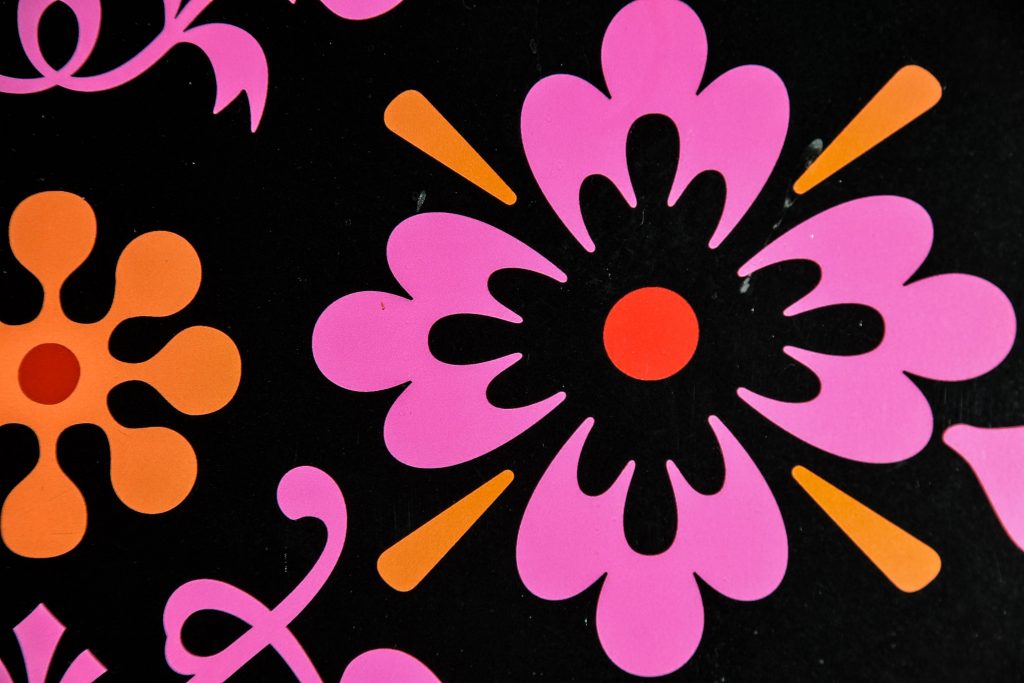
“I wanted to use something recognizable. I would choose some sort of silhouette, and then I would just overlay what I think is interesting, and I’m interested in a lot of stencils.”
While Semone has evolved her craft and style, she values variation in art. “I think there’s a place for all kinds of artwork,” she said. “There’s a place for artwork that’s emotive and evokes different feelings. There’s a place for artwork that’s very minimal. It’s just whatever the artist is feeling at that time,” Semone said.
Above all, Semone hopes that her paintings inspire joy and likens her work to pop music. She often refers to her work as “wall candy.”
Semone’s rabbit, like the greater body of her work, evoke joy and pleasure from the viewer. As for which art has influenced her, Semone says the inspirations are endless.
“For me it’s not’s not other artists that I look at their work and try to emulate, although there’s lot of artists I admire. It’s more ideas. My inspiration comes from everything around in the world.”
Readers can find a larger body of Semone’s work at https://www.absolutearts.com/portfolios/s/sivysivy/
Joshua “Jammer” Smith is a Tyler native and artist and a graduate of the University of Texas at Tyler. He holds bachelors and masters degrees in English. Smith enjoys coffee and comics, and spends most of his time working on his paintings and drawings. You can follow him here: https://www.jammerjsmith.com
Jessica Payne is an independent multimedia journalist with a focus on photography. Originally from Houston, she moved to East Texas in 2011. In 2016 after spending much of her career in an office setting, she left the 9-5 life to pursue her passion for sharing inspiring stories and capturing amazing moments with her camera.
Thanks for reading this story. Just one more thing. If you believe in the power of local journalism here in Tyler, I'm hoping that you'll help us take The Loop to the next level.
Our readers have told us what they want to better understand about this place we all call home, from Tyler's north-south divide to our city's changing demographics. Power, leadership, and who gets a seat at the table. How Tyler is growing and changing, and how we can all help it improve. Local arts, culture, entertainment, and food.
We can't do this alone. If you believe in a more informed, more connected, more engaged Tyler, help us tell the stories that need to be told in our community. Get free access to select Loop events, behind-the-scenes updates about the impact and goals of our work, and, above all, a chance to play a part in bringing more fresh, in-depth, unexpected journalism to Tyler.


